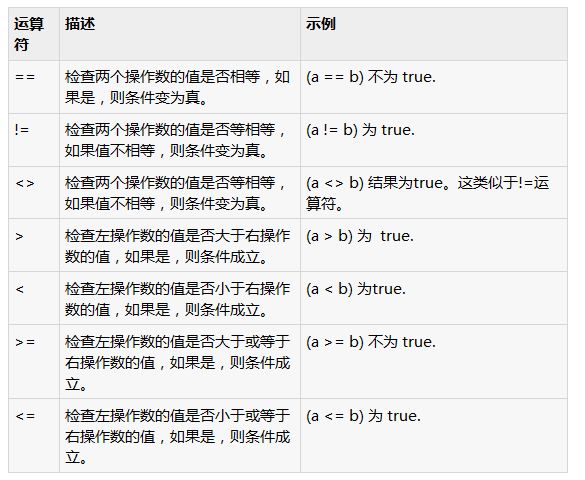下表列出了所有Python语言支持的比较操作符。假设变量a持有10和变量b持有20,则:

例如:
试试下面的例子就明白了所有的Python编程语言提供的比较操作符:
|
1
2
3
4
5
6
7
8
9
10
11
12
13
14
15
16
17
18
19
20
21
22
23
24
25
26
27
28
29
30
31
32
33
34
35
36
37
38
39
40
41
42
|
#!/usr/bin/pythona = 21b = 10c = 0if ( a == b ): print "Line 1 - a is equal to b"else: print "Line 1 - a is not equal to b"if ( a != b ): print "Line 2 - a is not equal to b"else: print "Line 2 - a is equal to b"if ( a <> b ): print "Line 3 - a is not equal to b"else: print "Line 3 - a is equal to b"if ( a < b ): print "Line 4 - a is less than b"else: print "Line 4 - a is not less than b"if ( a > b ): print "Line 5 - a is greater than b"else: print "Line 5 - a is not greater than b"a = 5;b = 20;if ( a <= b ): print "Line 6 - a is either less than or equal to b"else: print "Line 6 - a is neither less than nor equal to b"if ( b >= a ): print "Line 7 - b is either greater than or equal to b"else: print "Line 7 - b is neither greater than nor equal to b" |
当执行上面的程序它会产生以下结果:
|
1
2
3
4
5
6
7
|
Line 1 - a is not equal to bLine 2 - a is not equal to bLine 3 - a is not equal to bLine 4 - a is not less than bLine 5 - a is greater than bLine 6 - a is either less than or equal to bLine 7 - b is either greater than or equal to b |










